This is a guest post from Joe Camacho, a first-year Master of Education Program candidate at the University of Washington . Joe participated in the 2014 4 Stops 1 Destination tour by the Hispanic Access Foundation. He wrote this piece reflecting on the topics he learned during the trip.
Want to contribute to our blog? We accept guest entries! For more information or to submit a post, emails us at info@latinooutdoors.org.
Over 278 million people visit national parks yearly, yet only 9 percent are Latino, according to the American Latino Heritage Fund. On a recent trip sponsored by the Hispanic Access Foundation (HAF), seven Latino college students traveled to six national parks across the West. This experience was filled with “firsts” for the students – first time mountain biking, first time white water rafting, and for some, first time visiting the parks. While many of the activities were foreign to the students, they all hold the same stance when it comes to protecting public lands. In fact, the 2012 Colorado College poll found that 87 percent of Latinos list the protection of parks, clean air and water as a top issue.
What many people do not know is that the Land and Water Conservation Fund (LWCF) helps protect our nation’s public lands and even helps create new parks.
The LWCF, established in 1965, has been one of the most successful strides towards conserving public lands in the United States. It has permanently protected over five million acres of public lands. How does this fund protect so much land? Offshore drilling companies pay royalties to the government to offset the damage that comes from the process of oil extraction. A portion of the money collected from offshore drilling is directed to the LWCF, which in turn is used toward protecting land, water and recreation areas in the United States. In theory, this is a great idea!
Yet here’s a reality check: in 2013, the Department of the Interior collected approximately $9 billion from offshore energy production, but only $305 million went towards LWCF and the programs LWCF funds. It is apparent that something isn’t right. In 40 years, Congress has fully funded the LWCF at its $900 million cap twice. A fully funded LWCF ensures that the lands that the HAF group visited will remain protected for generations to come.
It’s a no-brainer that the LWCF should be used for its full-intended purpose. This isn’t a Republican or a Democrat issue – it’s a human issue. We have a responsibility to protect our nation’s public lands. It’s about time that we fully fund LWCF before there is nothing left to conserve.
Joe Camacho is currently at completing a 10-month residency at IslandWood in their Graduate Program in Education for Environment and Community, with the University of Washington. Four days a week he teaches children from urban Seattle and surrounding counties the importance of environmental and community stewardship. This past Summer, working with the National Park Service and Geo Corps America , Joe created the first National Junior Ranger Program on Caves and Karst.
After graduation Joe looks forward to being an Earth Science Educator.



